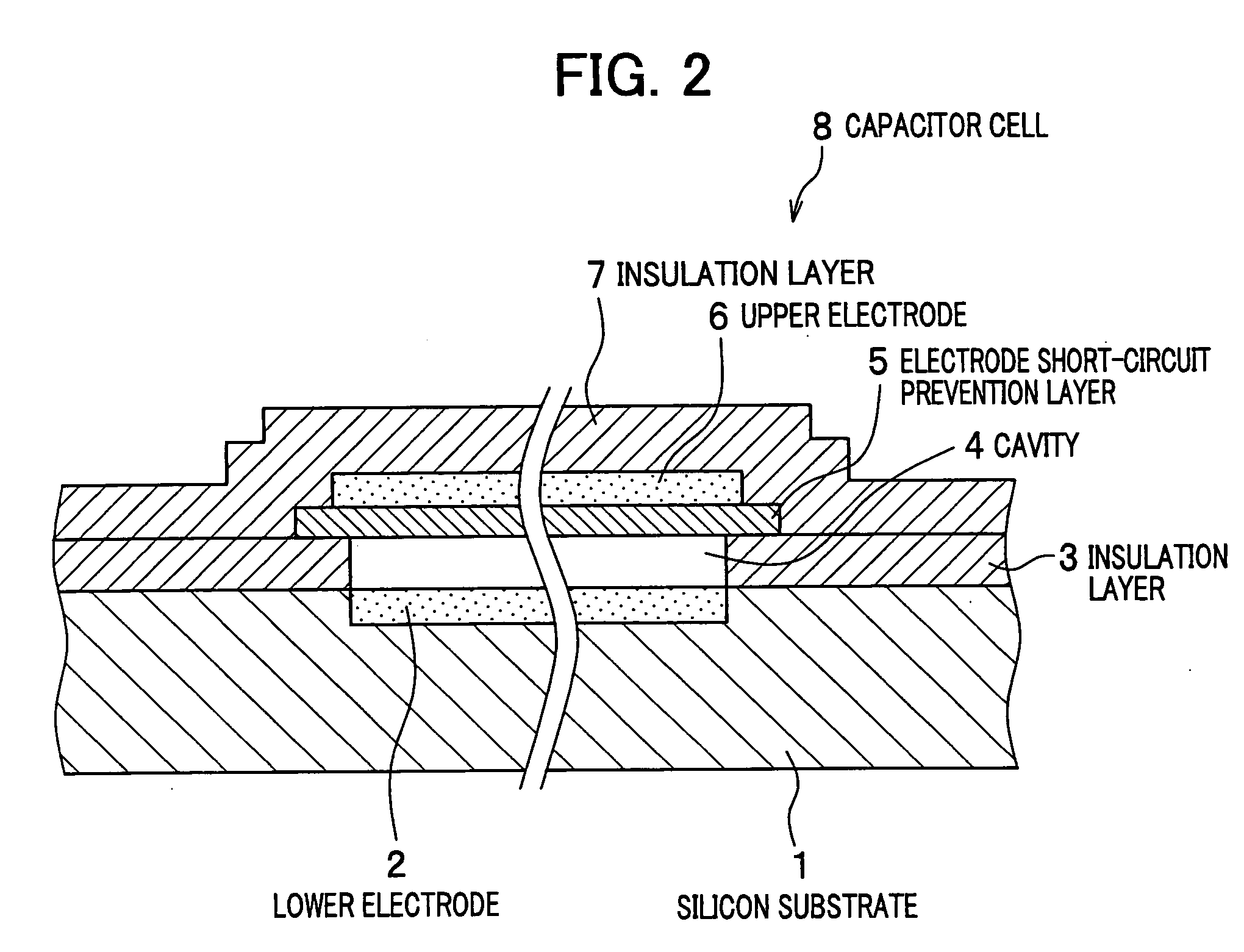Sound-electricity conversion device, array-type ultrasonic transducer, and ultrasonic diagnostic apparatus
a conversion device and ultrasonic technology, applied in ultrasonic/sonic/infrasonic diagnostics, mechanical vibration separation, applications, etc., can solve the problems of preventing the sensitivity of a receiving transducer, excessive current flow or discharging phenomenon between the electrodes, and low electromechanical conversion efficiency of the crystal, so as to reduce the noise level of the ultrasonic diagnostic apparatus and stabilize the sound-electricity conversion characteristics.
- Summary
- Abstract
- Description
- Claims
- Application Information
AI Technical Summary
Benefits of technology
Problems solved by technology
Method used
Image
Examples
Embodiment Construction
[0035] Referring to the drawings, an embodiment of the present invention will be described in detail below.
[0036]FIG. 1 is a drawing to show a structural concept of a semiconductor diaphragm type sound-electricity conversion device according to an embodiment of the present invention. FIG. 2 is a drawing to show a sectional structure of a capacitor cell as a unitary constructional element of the sound-electricity conversion device.
[0037] As shown in FIG. 1, the sound-electricity conversion device 9 is configured with a plurality of capacitor cells 8 that are two-dimensionally arranged in a honeycomb shape on a silicon substrate 1. Each of the capacitor cells 8 is a capacitor comprising a lower electrode 2 formed on the silicon substrate 1 and an upper electrode 6 formed opposite to the lower electrode 2, the upper and lower electrodes sandwiching a cavity 4.
[0038] The upper electrode 6 flexes toward the lower electrode 2 when applied with a pressure, i.e., sound pressure, from the...
PUM
 Login to View More
Login to View More Abstract
Description
Claims
Application Information
 Login to View More
Login to View More - R&D
- Intellectual Property
- Life Sciences
- Materials
- Tech Scout
- Unparalleled Data Quality
- Higher Quality Content
- 60% Fewer Hallucinations
Browse by: Latest US Patents, China's latest patents, Technical Efficacy Thesaurus, Application Domain, Technology Topic, Popular Technical Reports.
© 2025 PatSnap. All rights reserved.Legal|Privacy policy|Modern Slavery Act Transparency Statement|Sitemap|About US| Contact US: help@patsnap.com



